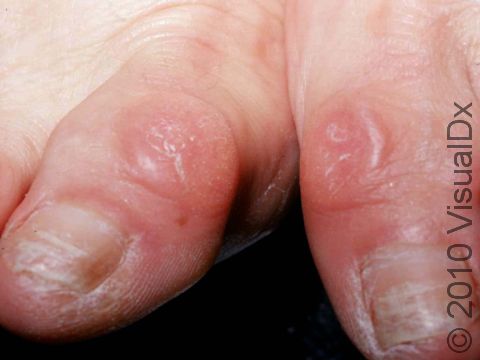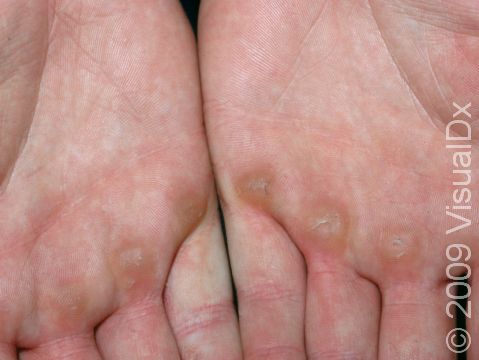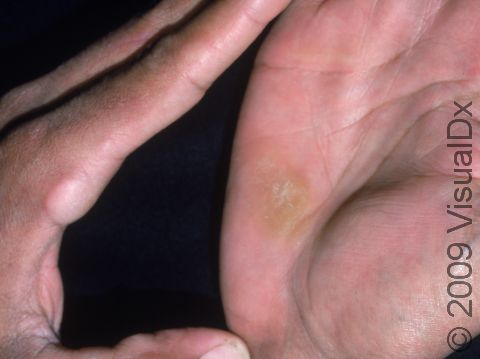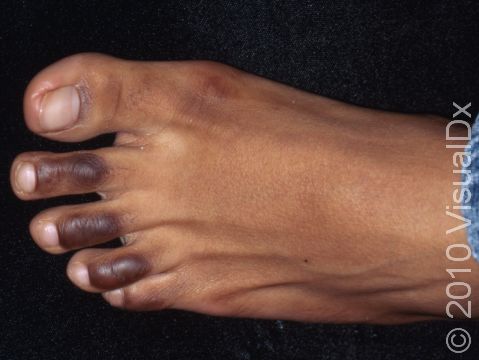Callus
A callus is skin thickening that occurs in response to excessive, repeated force on the skin, commonly due to constant pressure, rubbing, or friction. Certain deformities of the feet, such as crooked toes, may predispose a person to calluses. Calluses may be painful.
Who's At Risk?
Calluses may occur in nearly anyone. Those who stand for long periods or who wear ill-fitting shoes are most commonly affected. They are also especially common in older individuals.
Signs & Symptoms
Calluses are most frequently located on the feet and sometimes on the hands. They are usually located on the skin over bony prominences, such as on the heels or balls of the feet or knuckles on the hands or feet.
Self-Care Guidelines
- Try to avoid the repetitive forces causing calluses, such as by wearing comfortable shoes that fit well. Make sure there is plenty of room in the toe box.
- Callus cushions (eg, Dr. Scholl’s Callus Cushions) can help soften the thickened skin and cushion the area from the force and pressure that causes calluses.
- Products containing salicylic acid (eg, Dr. Scholl’s Liquid Corn & Callus Remover) can be applied to affected areas.
- Gentle paring with an emery board or a pumice stone may help to decrease the thickened skin of the callus. A soft fabric, such as felt, should be applied after paring to protect the underlying skin.
- Shoe pads that go inside the shoes (eg, Dr. Scholl’s step insoles) can be used to help relieve the pressure so foot calluses can heal.
Treatments
Your medical professional may:
- Pare the callus with a scalpel.
- Prescribe a topical medication such as salicylic acid or trichloroacetic acid to help dissolve the thickened skin.
- Refer you to a podiatrist, a medical professional specializing in foot care.
Visit Urgency
Calluses do not require medical intervention, but seek evaluation if they become bothersome. In particular, individuals with diabetes should pay careful attention to their feet given the risk of developing diabetic ulcers on the feet.
Trusted Links
References
Bolognia J, Schaffer JV, Cerroni L. Dermatology. 4th ed. Philadelphia, PA: Elsevier; 2018.
James WD, Elston D, Treat JR, Rosenbach MA. Andrew’s Diseases of the Skin. 13th ed. Philadelphia, PA: Elsevier; 2019.
Kang S, Amagai M, Bruckner AL, et al. Fitzpatrick’s Dermatology. 9th ed. New York, NY: McGraw-Hill Education; 2019.
Paller A, Mancini A. Paller and Mancini: Hurwitz Clinical Pediatric Dermatology. 6th ed. St. Louis, MO: Elsevier; 2022.
Last modified on June 30th, 2023 at 5:30 pm

Not sure what to look for?
Try our new Rash and Skin Condition Finder





